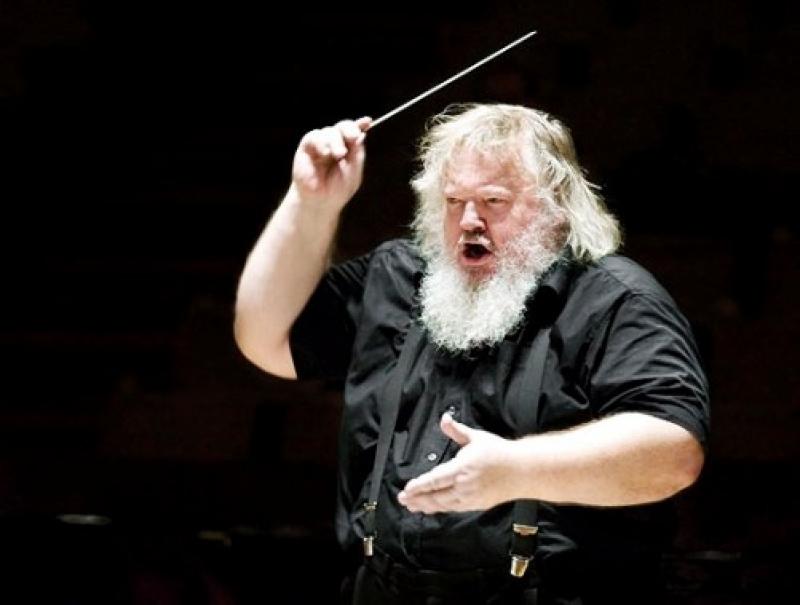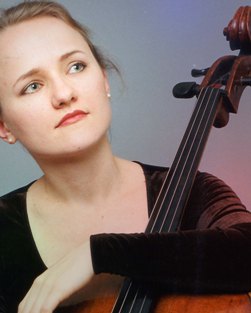London Schools Symphony Orchestra, Segerstam, Barbican Hall | reviews, news & interviews
London Schools Symphony Orchestra, Segerstam, Barbican Hall
London Schools Symphony Orchestra, Segerstam, Barbican Hall
Charismatic Finn raises the game of a fine youth orchestra in deep-vein Britten

With regional youth orchestras dropping from a thousand short-sighted, wholesale cuts - flagship Leicestershire the latest under threat - it should be enough just to celebrate 60 seasons of the LSSO, safe for now under the City of London's munificent wing. But last night was more than just another fun concert.
What I wasn't expecting was to find the ghost of Sibelius behind Britten's icy North Sea winds. Not the Sibelius of the cheery/bittersweet Karelia miniatures, where the composer's jovial compatriot even let his London young musicians do their own thing for a few bars in the Alla marcia while he turned to the audience, playing up to the Santa Claus image, and performed his version of a soft-shoe shuffle. No, Britten seems to have at the back of his mind the lean master of the Fourth Symphony and Tapiola, whose wood sprites flicker around the eerie, unquiet scherzo; throughout, there's the same sense of a desperate need to break free of the soul's dark night. The Symphony for Cello and Orchestra, to give it the full name, is a tough, exposed work for youth to handle, with huge gaps in the scoring to let the cellist breathe, however painfully. The centre certainly held here. LSSO's woodwind captured the elusive mood of their wraith-like writing and Segerstam's firm underlying rhythmic sense, apparent from the first bars of Berlioz's Roman Carnival Overture, was matched by that of his quietly remarkable cellist daughter Pia (pictured below by Kira Glusckoff).
 Very well, so it's not a sound that tears at the soul from the first note like that of the dedicatee, Rostropovich - whose is? - honoured by Britten with a starkly uningratiating monument to set alongside Prokofiev's Symphony Concerto and Shostakovich's Second. But Segerstam fille - a slender Mountain King's Daughter, focused inwardly on her playing rather than giving out to her younger colleagues - projects a more tightly focused golden tone that never let go of Britten's tortured rhetoric. There are still textures here that anyone writing a new work today would kill for, above all the return of contrabassoon, tuba and double bass writhing with woodwind unisons above boring a memorable oscillation into the brain while the cellist strums guitar-like pizzicati to its uneasy rest. The work's final, almost cinematic liberation always comes as a surprise: another case, perhaps, of Billy Budd's repressed sea captain catching sight of "a far-shining sail". And it is indeed a true ensemble piece which shares its bold ideas; outstanding contributions came with gun-shot timpanism from Jack McNeill-Adams and a skewed sea-shanty trumpet solo boldly taken by Louis Barclay.
Very well, so it's not a sound that tears at the soul from the first note like that of the dedicatee, Rostropovich - whose is? - honoured by Britten with a starkly uningratiating monument to set alongside Prokofiev's Symphony Concerto and Shostakovich's Second. But Segerstam fille - a slender Mountain King's Daughter, focused inwardly on her playing rather than giving out to her younger colleagues - projects a more tightly focused golden tone that never let go of Britten's tortured rhetoric. There are still textures here that anyone writing a new work today would kill for, above all the return of contrabassoon, tuba and double bass writhing with woodwind unisons above boring a memorable oscillation into the brain while the cellist strums guitar-like pizzicati to its uneasy rest. The work's final, almost cinematic liberation always comes as a surprise: another case, perhaps, of Billy Budd's repressed sea captain catching sight of "a far-shining sail". And it is indeed a true ensemble piece which shares its bold ideas; outstanding contributions came with gun-shot timpanism from Jack McNeill-Adams and a skewed sea-shanty trumpet solo boldly taken by Louis Barclay.
The rest of the programme was more of a holiday, though Segerstam showed a true Finn's austerity in the abrupt pauses between the surprisingly busy string textures of Karelia's Ballade. He wouldn't let Berlioz's carnival coruscate: this was more a case of Kaurismäki's laconic Finns abroad - Leningrad Cowboys do Piazza Navona, perhaps, gaping with beers in hand at the kerfuffle around them - but what it did boast was exemplary tempo control and fabulous crescendi. Which takes us all the way from the single-note swells of horn and clarinet to the slow burn of ghost cohorts on the Appian way in Respighi's Pines of Rome.
That's always a good showcase for large youth-orchestra forces, and duly unfurled with inscaped splendour as the ancient Roman buccine fanfared from the Barbican Hall's grand circle; but here, too, Segerstam brought his own sound to bear in the unique depths of string tone that turned the auditorium, somehow, into a resonating cathedral for the central rites of catacombs and Janiculum. And he took a typical liberty with the swelling chant of underground Christians - starting loud with unforgettable contrabassoon edge, rising to apocalyptic. Yes, the Segerstam crescendo is unique, as is the man himself, who ambled out to the front stalls at the end to encourage a standing ovation for his fabulous young players.
- Find out more about the Centre for Young Musicians where the LSSO is based
- See what's on at the Barbican Centre
 Find Leif Segerstam on Amazon
Find Leif Segerstam on Amazon
Watch Segerstam conduct the Gothenburg Symphony Orchestra in the Alla marcia from Sibelius's Karelia Suite
Share this article
The future of Arts Journalism
You can stop theartsdesk.com closing!
We urgently need financing to survive. Our fundraising drive has thus far raised £49,000 but we need to reach £100,000 or we will be forced to close. Please contribute here: https://gofund.me/c3f6033d
And if you can forward this information to anyone who might assist, we’d be grateful.

Subscribe to theartsdesk.com
Thank you for continuing to read our work on theartsdesk.com. For unlimited access to every article in its entirety, including our archive of more than 15,000 pieces, we're asking for £5 per month or £40 per year. We feel it's a very good deal, and hope you do too.
To take a subscription now simply click here.
And if you're looking for that extra gift for a friend or family member, why not treat them to a theartsdesk.com gift subscription?
more Classical music
 Kohout, Spence, Braun, Manchester Camerata, Huth, RNCM, Manchester review - joy, insight, imagination and unanimity
Celebration of the past with stars of the future at the Royal Northern College
Kohout, Spence, Braun, Manchester Camerata, Huth, RNCM, Manchester review - joy, insight, imagination and unanimity
Celebration of the past with stars of the future at the Royal Northern College
 Jansen, LSO, Pappano, Barbican review - profound and bracing emotional workouts
Great soloist, conductor and orchestra take Britten and Shostakovich to the edge
Jansen, LSO, Pappano, Barbican review - profound and bracing emotional workouts
Great soloist, conductor and orchestra take Britten and Shostakovich to the edge
 Jakub Hrůša and Friends in Concert, Royal Opera review - fleshcreep in two uneven halves
Bartók kept short, and a sprawling Dvořák choral ballad done as well as it could be
Jakub Hrůša and Friends in Concert, Royal Opera review - fleshcreep in two uneven halves
Bartók kept short, and a sprawling Dvořák choral ballad done as well as it could be
 Hadelich, BBC Philharmonic, Storgårds, Bridgewater Hall, Manchester review - youth, fate and pain
Prokofiev in the hands of a fine violinist has surely never sounded better
Hadelich, BBC Philharmonic, Storgårds, Bridgewater Hall, Manchester review - youth, fate and pain
Prokofiev in the hands of a fine violinist has surely never sounded better
 Monteverdi Choir, ORR, Heras-Casado, St Martin-in-the-Fields review - flames of joy and sorrow
First-rate soloists, choir and orchestra unite in a blazing Mozart Requiem
Monteverdi Choir, ORR, Heras-Casado, St Martin-in-the-Fields review - flames of joy and sorrow
First-rate soloists, choir and orchestra unite in a blazing Mozart Requiem
 Cho, LSO, Pappano, Barbican review - finely-focused stormy weather
Chameleonic Seong-Jin Cho is a match for the fine-tuning of the LSO’s Chief Conductor
Cho, LSO, Pappano, Barbican review - finely-focused stormy weather
Chameleonic Seong-Jin Cho is a match for the fine-tuning of the LSO’s Chief Conductor
 Classical CDs: Shrouds, silhouettes and superstition
Cello concertos, choral collections and a stunning tribute to a contemporary giant
Classical CDs: Shrouds, silhouettes and superstition
Cello concertos, choral collections and a stunning tribute to a contemporary giant
 Appl, Levickis, Wigmore Hall review - fun to the fore in cabaret and show songs
A relaxed evening of light-hearted fare, with the accordion offering unusual colours
Appl, Levickis, Wigmore Hall review - fun to the fore in cabaret and show songs
A relaxed evening of light-hearted fare, with the accordion offering unusual colours
 Lammermuir Festival 2025, Part 2 review - from the soaringly sublime to the zoologically ridiculous
Bigger than ever, and the quality remains astonishingly high
Lammermuir Festival 2025, Part 2 review - from the soaringly sublime to the zoologically ridiculous
Bigger than ever, and the quality remains astonishingly high
 BBC Proms: Ehnes, Sinfonia of London, Wilson review - aspects of love
Sensuous Ravel, and bittersweet Bernstein, on an amorous evening
BBC Proms: Ehnes, Sinfonia of London, Wilson review - aspects of love
Sensuous Ravel, and bittersweet Bernstein, on an amorous evening
 Presteigne Festival 2025 review - new music is centre stage in the Welsh Marches
Music by 30 living composers, with Eleanor Alberga topping the bill
Presteigne Festival 2025 review - new music is centre stage in the Welsh Marches
Music by 30 living composers, with Eleanor Alberga topping the bill
 Lammermuir Festival 2025 review - music with soul from the heart of East Lothian
Baroque splendour, and chamber-ensemble drama, amid history-haunted lands
Lammermuir Festival 2025 review - music with soul from the heart of East Lothian
Baroque splendour, and chamber-ensemble drama, amid history-haunted lands

Add comment